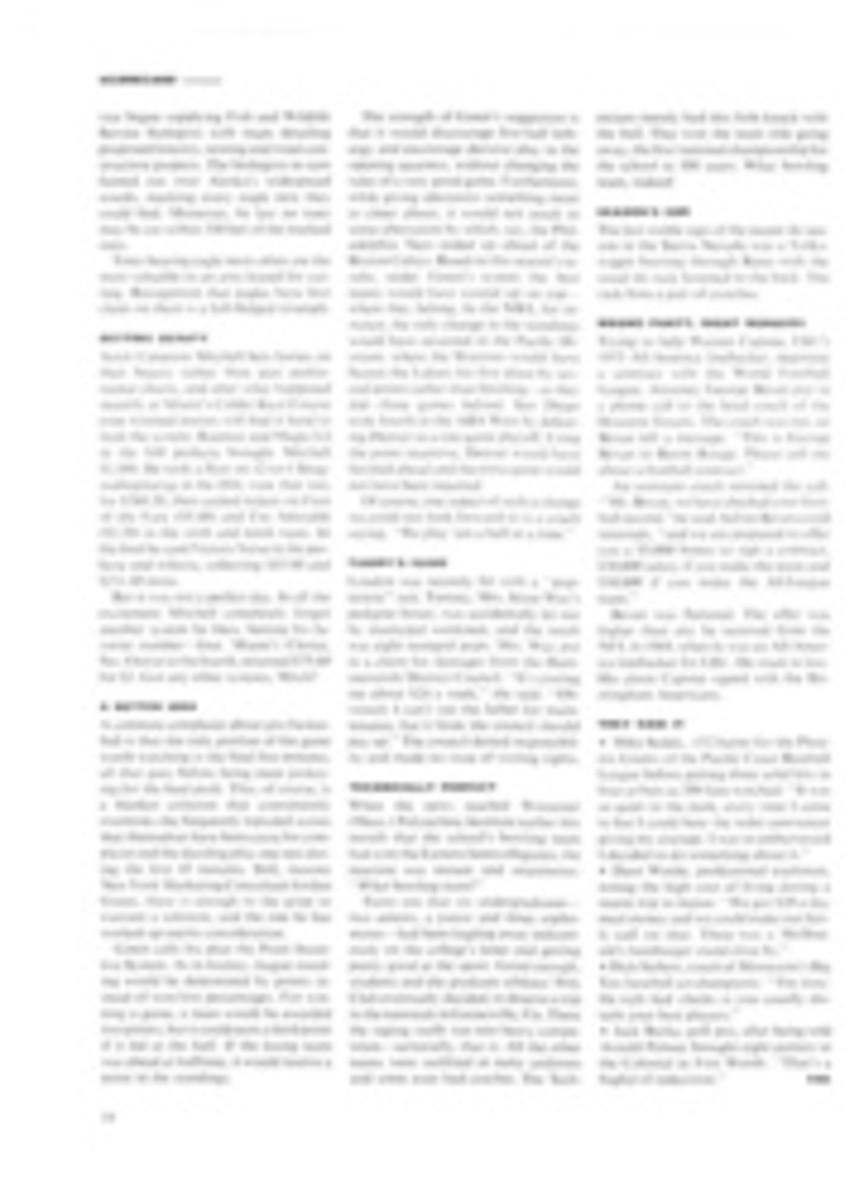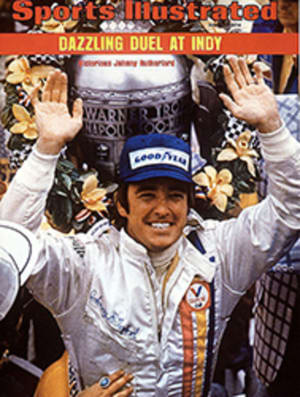
Attila gives his approval
Give or take a few thousand press kits, North America has 19 major professional leagues and tours in business at the moment. There are 155 major league teams dishing out punishment to each other, to pucks and to various sized balls and goals. We have Stars, Oilers and Rockets coming out of our ears and eyeballs. Pretty soon our newspapers will have Watergate on the front page, comics on the back page and nothing but the sports section in between.
The latest contributor to the pro sport glut is a game that sounds as if it were manufactured by Parker Brothers—box lacrosse. But box lacrosse does not come in a box like Monopoly nor is it a new game, except in the way the National Lacrosse League is packaging it. Box lacrosse comes in a hockey rink and is played on wood rather than ice by six new franchises: the Philadelphia Wings, Maryland Arrows, Syracuse Stingers, Rochester Griffins, Toronto Tomahawks and Les Quebecois of Montreal. It is, of course, a version of the old Indian game of field lacrosse—a fast, skillful, rough and entertaining indoor sport with six men per side (instead of 10) using web-ended sticks to get a hard rubber ball into a goal that is 4' high and 4½' wide.
Some of the league's owners and publicists are trying to convince the public that box lacrosse is the battle of Stalingrad indoors, that Left Intimidator is a position and that a lacrosse stick is a mace in disguise. The Maryland Arrows, who play at The Capital Centre outside Washington, distribute bumper stickers featuring a cartoon brute named Crunch Crosscheck and the slogan "Ya gotta be mean ta play Box Lacrosse!" Their radio spots have Attila the Hun praising the sport as "the meanest game in the world." Philadelphia, capitalizing on the reputation of ice hockey's Stanley Cup champions (page 20), advises fans to think of box lacrosse as "hockey where every team is the Philadelphia Flyers." The Wings' publicist describes Captain Carm Collins as "the heavyweight champion of North America."
Collins is actually a better lacrosse player than fighter, yet in Philly's first game he got Maryland's Paul Suggate down on the floor and broke his nose. There were four fights in the first Montreal-Rochester game. Things calmed down a bit last week, the league's second, but the come-see-the-gladiators pitch did not.
"It's a rough, tough game, but not a dirty sport by any means," says Wings General Manager Jack Bionda. "You're well padded. We wear kidney pads, which hockey players do not." Still, in their first four games the Wings suffered three substantial injuries.
"I don't like fights because they disrupt my system," says Rochester Coach Morley Kells. "We can handle ourselves, but I prefer to play lacrosse." Nevertheless, in speaking of his star forward, Kells describes Kevin Parsons as the former "top policeman on the West Coast."
Box lacrosse should leave the policemen, enforcers and intimidators to ice hockey because in some ways the NLL has a superior game. Its roots are in two Canadian hotbeds, Ontario and British Columbia, where boys grow up playing hockey in the winter and box lacrosse in the spring and summer on the same rink, minus the ice. (Rochester's leading scorer, Rick Dudley, also plays for the NHL's Buffalo Sabres.)
Box lacrosse is a hybrid—part field lacrosse, part ice hockey and part basketball—with, yes, a bit of jousting and boxing thrown in. There is more scoring than in hockey but without the adding machine needed for pro basketball, from which it borrowed the 30-second clock. If you hold the opposition to 12 points, you are playing good defense. From hockey come the six-man sides, the penalty box (for tripping, elbowing, slashing, etc.) and the system of substituting during the course of play, with no time-outs. From field lacrosse come the sticks (which sell for $20 and up and are mainly manufactured on a Canadian Indian reservation) and their use in whopping opponents on their arms and backs. The ball is carried in the webbing of the stick and bounced at the goal, flung overhand or slung side-arm. One of the more exciting box lacrosse plays is the "breakaway," in which Crunch Crosscheck steals the ball and races hellbent toward the goalie, who at that moment feels as though his oversized stick is no bigger than a Ping-Pong paddle.
Some of lacrosse's niftiest maneuvers, indoors or out, are reminiscent of basketball. The goalies often initiate fast breaks with outlet passes that would make an NBA center proud. Players set picks, pass behind their backs and jostle for position a la Willis Reed and Wes Unseld.
The NLL is the third try at making pro lacrosse pay off. The National Lacrosse Association, founded by two coaches from the Ontario amateur leagues, Morley Kells and Jim Bishop, had eight teams in 1968 but died, says Kells, mainly because they could not get the use of the Forum in Montreal. Kells and Bishop tried again in 1972, and again flopped. The present league seems to have adequate financing and ample-sized arenas. The Montreal franchise is run by ex-NHL star John Ferguson and has the Forum. Toronto is owned by Bruce Norris, who also has the Detroit Red Wings, and is coached by founder Bishop. The Tomahawks will play the home half of their 40-game schedule in Maple Leaf Gardens. The Maryland owners expect that local interest in college lacrosse will expand into love of the pro game, and both Rochester and Syracuse have long lacrosse traditions.
Yet it has been Philadelphia, not universally known as a lacrosse center, that has had the highest average attendance so far. The Wings drew 12,841 for their opening night game at The Spectrum. It might have been more except that the town was going crazy over the Flyers' Stanley Cup victory that afternoon in the same arena. Philly has averaged 10,500 a game, and there have been crowds of 9,100 in Montreal and 7,200 in Maryland—much larger than all but outrageous optimists had predicted.
If the NLL holds up well this season, will it expand? Chances are that it will, and perhaps it will even get a few more Americans into the lineups along with the Canadians and raise the dismal pay scale—an average season salary is now about $6,500. If the league does expand, there are some dandy nicknames available in the amateur ranks in British Columbia. How does the New Westminster Salmon Bellies strike you?
Good night, Attila. Good night, Crunch.
PHOTO
ROCHESTER FORWARD AL GORDANEER BESETS MONTREAL GOALIE ERNEST MITCHELL

